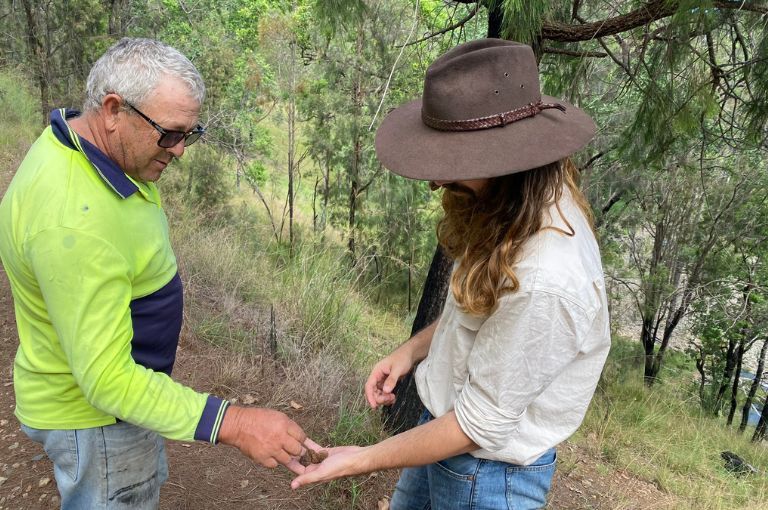
In Nymboida, a small town in northern New South Wales decimated by the Black Summer bushfires, landholders are finding a way to heal by helping the local glossy black cockatoo population and other wildlife to recover.
The small community of just over 300 residents was one of the areas worst affected by the fires that raged through the region in November 2019, destroying over 85 homes and vast tracts of habitat.
A partnership between the Great Eastern Ranges and WIRES is supporting Landcare and community groups in Nymboida to assist and expand populations of wildlife still recovering from the bushfires.
With funding through Glideways, Flyways and Stepping Stones, Clarence Landcare is engaging landholders in Nymboida to support the recovery of the region’s glossy black-cockatoos by assisting she-oak trees, the species’ primary food source, to regenerate.
These bright birds, with their characteristic creaky cry and ornate tail with vivid red bands, were once frequent visitors to Nymboida. Since the fires, many residents have not sighted them.
“We wanted to focus our efforts here on glossy black-cockatoos as they are a NSW threatened species. We know that 45% of their habitat was burnt across the region with an estimated 27% reduction in their food source, but little is known about the impact the fires have had on local populations,” says Debbie Repschlager, Clarence Landcare Coordinator & Program Manager.
“We are supporting the recovery of the species by working with private landholders to re-establish food trees for the cockatoos through planting and managing weeds as well as trialling some nest boxes to replace the tree hollows that they depend on, many of which were lost in the fires.”
Landcare visited each of the ten properties involved in the project to map she-oaks and assess the quality of remaining habitat to inform on-ground efforts.
One of these landholders is Tony McLennan, a beef farmer whose property stretches from the ranges to the Nymboida River. The fire swept right through the middle of the farm, leaving only 50 acres around his homestead unburnt.

His property provides an important connection for glossy black-cockatoos and other animals moving across the region and a rich diversity of habitats for wildlife, including platypus and the endangered eastern freshwater cod.
“I never want to see a fire like that again. It turned daylight into darkness and the fire and heat coming out of the mountains was intense. There were embers raining down all around. It will take a generation of work to repair the impact on my property. The fire also did a lot of damage to the forest, killing many of the big she oaks and leadwoods. Then the big rains last year caused masses of erosion and an explosion of weeds,” says Tony.
Tony says that he can use all the help he can get.
“I am concerned about the environmental impact of things like weeds and there is too much for me to do alone. Having Landcare’s support and expertise and the funding to support restoration activities through this project makes a big difference,” says Tony.
Debbie says that one of the good co-benefits of the project has been the opportunity to raise landholders’ awareness of the species that share their land.
“When I first talked to Tony about glossy blacks, he wasn’t sure if they visited, but as soon as we saw a small family of them on his property, he immediately recognised them. By pointing out the food trees (Allocasuarina torulosa) on his property, he was able to make that connection between his farm and how it helps to support this endangered species,” says Debbie.
“I was a bit saddened when I heard that they are endangered as they are a beautiful bird. I am taking part in this project because I’d like to help, but I didn’t know what I could do. All I can do is make sure that they are provided with what they need. I am happy to accommodate whatever that is,” says Tony.
Other Glideways, Flyways and Stepping Stones bushfire recovery projects are being rolled out in the Hawkesbury Nepean region and the Bega Valley, where glossy black cockatoos are also a focus species.



 Media release
Media release